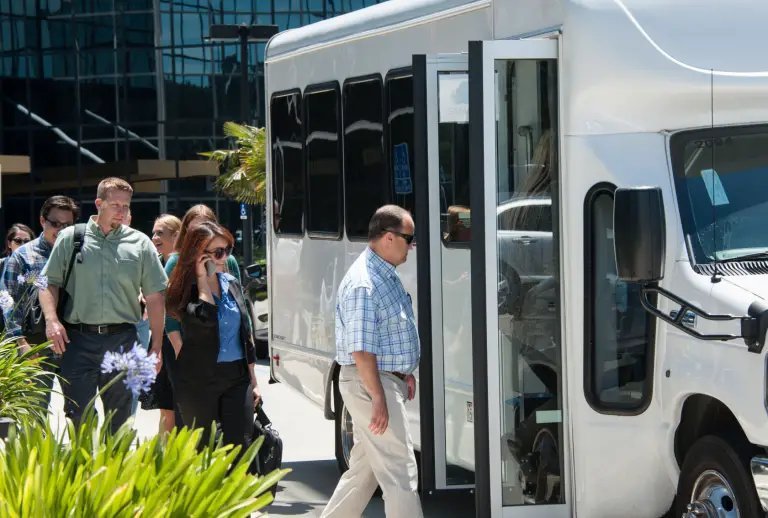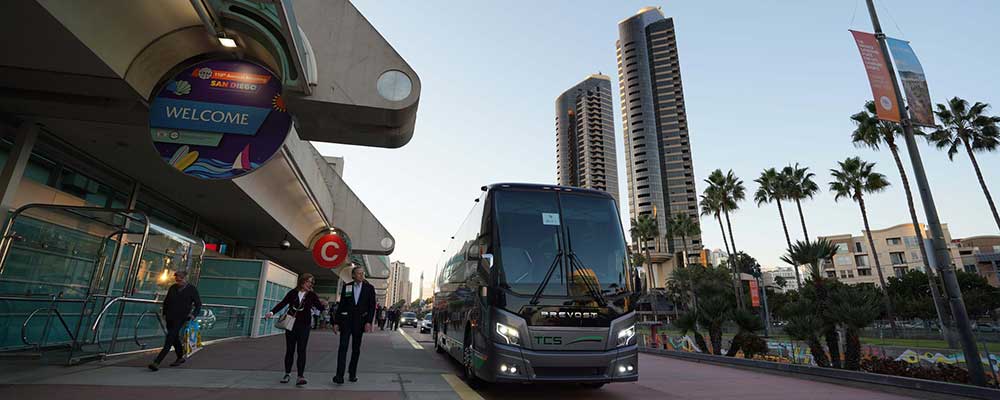Here are 10 great ways to budget and reduce the cost of employee shuttles:
1. Perform a thorough cost analysis
Do a cost analysis on the entire shuttle service. This will include direct costs such as leasing, purchases of vehicles or rentals, but also operational expenses like maintenance, insurance, fuel, and driver salaries. Understanding the full cost spectrum will give a clearer picture of the budget required to run an effective shuttle service.
2. Establish Clear Budget Goals
Create budget goals specific to your needs based on the cost analysis you have conducted. Determine how much you're willing to spend on shuttle service, and establish key performance metrics (KPIs) that will be used to gauge the effectiveness. These KPIs include employee happiness and utilization rates, overall efficiency, etc. Specific goals can help guide spending and resource allocation.
3. Explore Options for Funding
Explore funding sources for a shuttle service. It could be company internal funds, grants, or collaboration between local transportation authorities and the company that provide financial assistance or resources. Understanding the various funding options can help ease some costs, as well as allow for more service offerings.
4. Prioritize vehicle options that are most cost-effective
When selecting the vehicles to be used for shuttle service, you should consider the cost-effectiveness and efficiency of each choice and how they balance the initial cost against future operational costs. Take into consideration factors such as reliability of the vehicle as well as fuel efficiency and maintenance requirements. Buying used cars in good condition or leasing them instead of buying could save you money upfront.
5. Set up a dynamic pricing model
Think about a dynamic pricing system for shuttle services if it's possible. A nominal cost could be charged for shuttle service, which helps to offset the operational costs. The pricing structure could be based primarily on usage to encourage more employees to utilize the shuttle service, while contributing to the budget.
6. Utilize technology to cut expenses
Technology can be utilized to cut costs and improve efficiency. Fleet management is able to track the use of fuel and monitor maintenance. They can also optimize routes. GPS tracking helps improve scheduling and cut down on idle time. This can reduce fuel costs. The investment in technology could have an initial cost, but it can yield significant savings over time.
7. Monitor and control operational costs
Regularly review your operational costs and identify areas for cost reduction. Monitor closely the fuel consumption and maintenance costs as well as driver overtime. Savings can be achieved through the implementation of strict fuel management methods such as encouraging environmentally friendly driving. Schedule quarterly or monthly review to ensure that the shuttle service is within budget.
8. Encourage employees to be involved in cost-saving initiatives
Encourage employees to take part in shuttle services that save money. It could be as easy as encouraging employees to carpool or rewarding those who consistently use the shuttle. Engaging employees will not only improve a sense ownership, but also lead to increased usage rates.
9. Plan for Contingencies
Make sure you have a contingency reserve included in your budget to pay for unexpected expenses. Shuttle services could be hit with unexpected expenses, such as fuel price fluctuations or emergency repairs. By putting aside a certain percentage of your budget for a buffer, you'll be able to ensure that the shuttle service continues to operate smoothly.
10. Check in regularly and adjust your Budget
Also, continuously examine and modify the budget based on actual utilization and performance information. Get feedback from employees on their experience and satisfaction regarding shuttle service. Regular assessments help you detect trends in the transportation needs. This will allow you to make timely budget adjustments and optimize your resource allocation.
If they follow these guidelines businesses can control costs efficiently and create an affordable budget for employee transport. This can improve the efficiency of the service, and ultimately employee satisfaction. Check out the top rated a fantastic read on employee shuttle for website recommendations including private transportation from atlanta airport, airport service, luxury transportation, car service pick up, airport shuttle home pick up, van transportation, ground transportation from miami airport, airport transportation near me, airport shuttle bus, car services lax airport and more.

10 Ways To Maximize The Route Planning Efficiency Of An Event's Transportation Provider. Events
Here are 10 strategies for route planning and efficiency for a company event transportation service:
1. Analyze Locations of Attendees
It is possible to begin by collecting details on participants' backgrounds. This can be done via registration forms or RSVPs that include addresses or general locations. It is crucial to understand the geographic spread of participants in order to create routes which are efficient and cut down on the time spent traveling.
2. Utilize Route Optimization Software
Make sure you invest in software for optimizing routes that analyzes traffic patterns to find the most efficient routes. These programs allow you to discover the fastest routes and avoid congested regions. They can also recommend alternatives to routes in the event of need. The use of technology to plan routes can improve overall efficiency.
3. Make a plan for Peak Traffic Times
Consider the peak times for traffic when planning transportation. Review the past data on traffic to pinpoint the times that congestion is likely to be the case within the vicinity of the location. Make adjustments to shuttle schedules in order to avoid delays, making sure that attendees arrive on time and avoid unnecessary waiting times.
4. Establish Multiple Pickup Points
Create multiple pick-up locations depending on the location of the attendees. This will improve the convenience and reduce travel times. These could be hotels, transport hubs or popular gathering spots. You can simplify the transportation process by providing numerous pick-up points. It will also decrease the distance to the event.
5. Create a detailed travel schedule
Create a detailed schedule of transportation that outlines departure and arrival times and the estimated duration of each route. Distribute to attendees the schedule so that they can expect their transportation. A well-organized timetable can keep your transportation service running smoothly, and minimize confusion.
6. Incorporate Buffer Times
Incorporate buffer time times into your transportation schedule in case of unexpected delays. This can be caused by traffic jams, bad weather and other circumstances. Allowing additional time for pick-ups and drop-offs can reduce the likelihood that attendees will miss important events due to transportation problems.
7. Monitor Real-Time Traffic Updates
Utilize real-time monitoring tools for traffic during the day of the event to alter routes automatically. The option of rerouting shuttles is a great method to ensure efficiency. This will also make sure that guests get to their destination on time.
8. Name the name of a Transportation coordinator
Appoint a shuttle coordinator for the event. They will manage the shuttle service. This individual is able to manage the logistical aspects and communicate with the drivers on a real-time basis. It is crucial to have a person who is in charge of the transport operation. This will help to ensure that everything goes smoothly.
9. Communication with attendees
Inform attendees about the shuttle schedules and pick-up points, as well as any potential changes. Utilizing mobile apps, SMS updates, or printed materials can improve communication, and make sure that attendees are aware of any adjustments to the transportation plan.
10. Gather Post-Event Feedback
After the event, invite attendees to provide feedback about their experience with transportation. Inquire questions about the speed and efficiency in the shuttles as as the overall satisfaction. Analyzing this feedback will aid in identifying strengths and weaknesses in the transportation plan, which will allow to make improvements in the future events.
By implementing these tips companies can efficiently create routes and improve the effectiveness of corporate event transportation services. The planning of routes ensures that attendees arrive on time and also creates an enjoyable experience for guests. Planning is vital to ensure that corporate events go smoothly. Follow the recommended corporate event transportation tips for more info including trucking services near me, managed logistics, transport systems, transport services near me, transportation solutions, logistics near me, trucking services near me, services and logistics, reach logistics, service transportation company and more.
